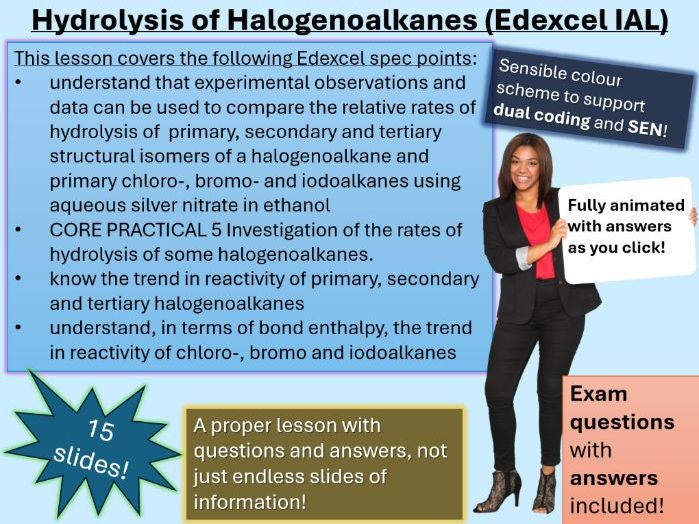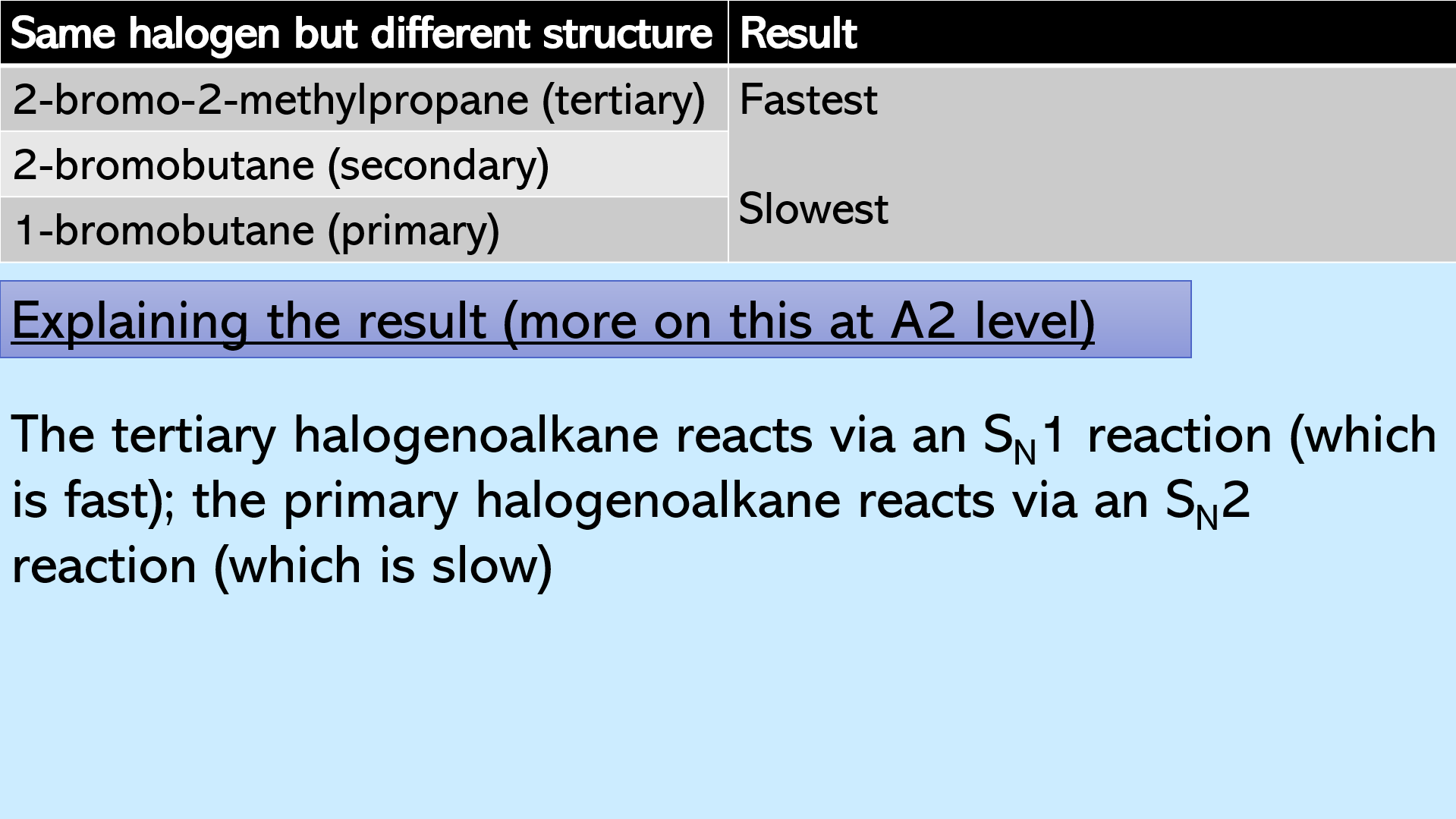


How can the rates of hydrolysis of halogenoalkanes be investigated? What is the trend in reactivity of primary secondary and tertiary halogenoalkanes and how does bond enthalpy explain this? All this and more covered in this comprehensive lesson with questions and answers! This is a Year 12 A level lesson for Edexcel International Unit 2 – WCH12, but it can also be used for all UK exam boards. All the slides in this lesson are fully animated and include answers to every mini plenary question and exam question. The breakdown of the slides (which are best opened on Microsoft PowerPoint) is as follows:
Slide 1 - Title and 5-minute starter. The starter is a grid of four questions entitled ‘last week, last lesson, today’s learning and future learning’. Use this generic slide for all of your lessons by simply changing the questions and the answers each time.
Slide 2 - Lesson objectives (see thumbnail image)
Slide 3 – A recap on the tests for halide irons, with the colours of the precipitates
Slides 4 – 5: Explanation of how hydrolysis with silver nitrate solution works with example chemical equations
Slide 6 – Expected result for the hydrolysis of halogenoalkanes with different halogens but the same structure
Slide 7 – Explanation for this result
Slide 8 - Expected result for the hydrolysis of halogenoalkanes with different structures but the same halogen. The explanation (which is covered in more detail in Unit 4) is on this slide
Slide 9 – 11: Core Practical 5: Investigation of the rates of hydrolysis of some halogenoalkanes. Answers to the analysis questions from the lab book animate on to the screen when you click
Slides 12 – 15: Exam questions with mark scheme answers (included with the purchase of this resource)
Learning outcomes:
Understand how to compare hydrolysis rates of haloalkanes
Describe and explain observed results based on bond strength
Distinguish SN1 and SN2 reaction pathways
Practice applying knowledge in Core Practical context
This lesson supports both practical skills and theoretical understanding—ideal for preparing students for assessed practical work and data interpretation questions.
If this resource supports your teaching, please consider leaving a positive review. It helps Lifeboat Teachers keep providing ready-to-use lessons for busy educators!
Something went wrong, please try again later.
This resource hasn't been reviewed yet
To ensure quality for our reviews, only customers who have purchased this resource can review it
to let us know if it violates our terms and conditions.
Our customer service team will review your report and will be in touch.